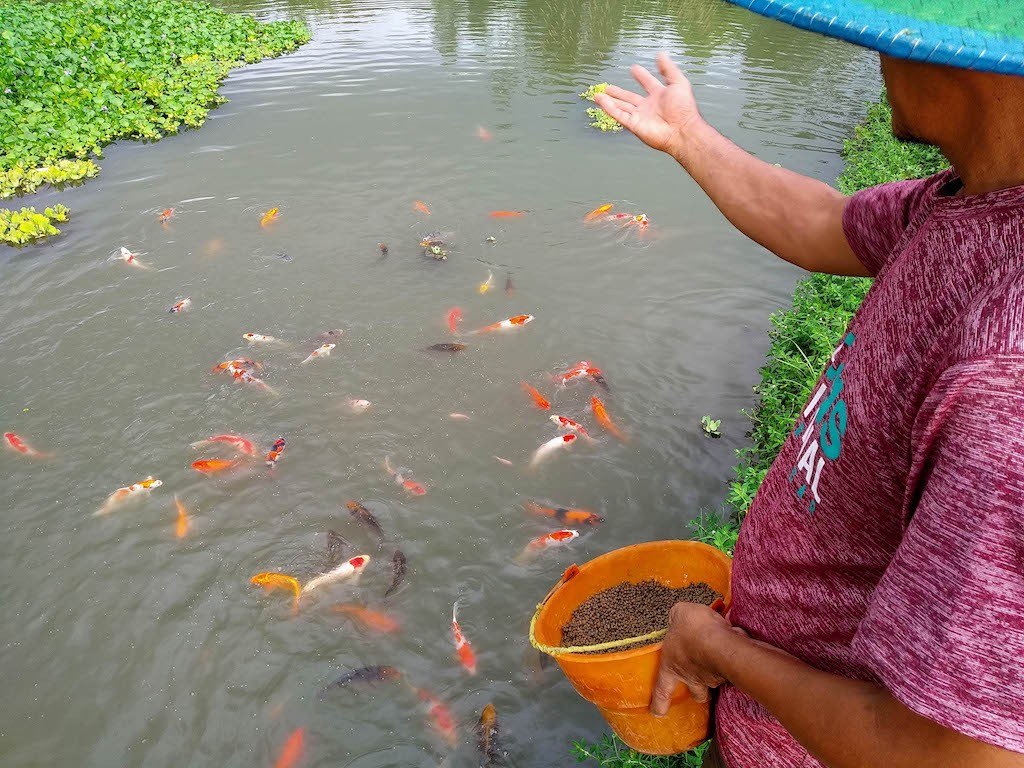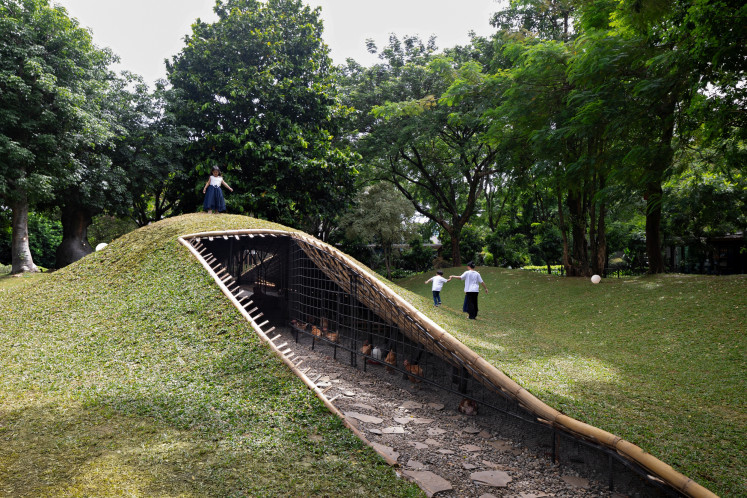Popular Reads
Top Results
Can't find what you're looking for?
View all search resultsPopular Reads
Top Results
Can't find what you're looking for?
View all search resultsBig fish: Koi farming flourishes in East Java's Blitar
Known as one of the biggest koi fish producers in the country, Blitar has around 2,000 koi farmers with sales in the tens of billions of rupiah.
Change text size
Gift Premium Articles
to Anyone
A
t the break of dawn, 46-year-old Saiful Mujab of Kemloko village in East Java’s Blitar goes to the rice field. But unlike most farmers, who take with them hoes or sickles, he takes fish food pellets.
On a 1-hectare rice field located around 500 meters from his house, Saiful has ponds filled with thousands of koi fish. Before feeding the fish, he turns on the water pumps to extract water from specially-made wells located in between the ponds. “I used to be able to take water from the river, but the water quality keeps getting worse. It is even harmful to the fish because of pesticides used by farmers,” he said.
Saiful is the second generation of koi farmers in Kemloko village, one of the koi farm centers in Blitar. Starting in 1996 with a small plot of land, he hung on when lohan fish became the talk of the town in 2002 and koi’s popularity seemed to dim. Four years later, koi once again became the star. Saiful then expanded his ponds to their current size.
Most koi farmers in Blitar joined the buzz at the time. In Kemloko village alone, there are approximately 200 koi farmers with ponds totaling 100 ha.
Saiful said koi farming generated a bigger income than rice farming. “Farming in the proper way with a 1/4-ha pond, for instance, yields a monthly income above Blitar's minimum wage,” he said.
The town is now known as one of the biggest koi producers in Indonesia, along with East Java’s Tulungagung and Kediri, and West Java’s Sukabumi. There are at least four yearly competitions and exhibitions of koi held in Blitar. One of them is Blitar Koi Club, whose head is Saiful. The event is held every June with the grand prize of the President’s Cup.
Adi Andaka, head of the Blitar Farming and Fisheries Agency, said there were 2,000 koi farmers in Blitar in 2019 with sales in the tens of billions of rupiah.
Jakarta, Bandung and Denpasar were said to be cities that purchased the most koi fish from Blitar.
“We plan to export our koi to Japan. Last year, Blitar’s koi participated in an exhibition in Japan and were celebrated due to their bold colors,” Adi said.
Read also: 145-year-old Blitar coffee plantation lures tourists with colonial history, internship opportunity
Koi as decorative fish have been bred in Japan since the beginning of the 19th century. In Japanese, “koi” sounds the same as the word for “love” or “affection”, and so it is a symbol of love.
Koi fish are often found in outdoor ponds in homes, offices or hotels. “The beauty of koi’s colors and patterns are more obvious when seen from above,” said Ahmad Dardiri, a koi farmer of Sekardangan hamlet in Blitar.
Koi lovers choose the fish based on colors, the combination of colors and the patterns. The most common colors are white, black, red, yellow and blue.
There are at least 20 popular variants of colors and patterns, which are named in Japanese. Kohaku, for example, are fish with two colors: white and red. Showa Sanshoku, on the other hand, are those with red, white and mostly black. There are also those with golden or metallic grey scales, called Kinginrin.
With its high profits, koi farming may tempt some away from traditional farming. But Saiful warned that a koi farmer needed to equip himself with adequate knowledge of the fish. “Koi farming is like mining gold and it takes time,” he said.
There are at least five phases of sorting during the first six months, starting when the fish seeds are 1 week old. Out of the thousands of seeds, it's possible that only 10 percent of those survive to the fifth or sixth month.
Farmers can begin to sell their fish in the fourth phase, when they are 5 months old and are 12 to 15 centimeters in length. Grade-A koi fish at this age are priced at Rp 25,000 (US$1.81) to Rp 35,000 per piece. While 1-year-old koi fish, which can grow to 35 or 40 centimeters long, are priced at Rp 500,000.
In the market, grade-A koi fish at 50 centimeters long are sold for Rp 2.5 million to Rp 10 million.
Saiful again reminded the other side of the seemingly lucrative koi farming. Along with adequate knowledge, koi farmers need a lot of capital for pond maintenance and fish food pellets. The most recent challenges are fish diseases and parasites, and Saiful hoped the government could aid farmers in battling these problems. (wng)











